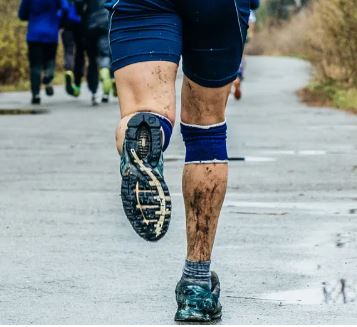Skin conditions are a common challenge for athletes, often caused by the unique demands of training and competition. Conditions like athlete’s foot, ringworm, and acne mechanica not only affect performance but can also lead to discomfort and long-term complications if left untreated. To better understand prevention and treatment, Dr. Jason Pirozzolo, a renowned sports medicine physician, shares his expertise.
“Athletes are particularly prone to skin conditions due to the constant exposure to sweat, friction, and shared equipment,” explains Dr. Jason Pirozzolo. “Preventing these issues starts with understanding the root causes and taking proactive measures.”
Most importantly, athlete’s foot, a fungal infection, thrives in moist environments like locker rooms and sweaty shoes. Symptoms include itching, redness, and peeling skin, usually between the toes. “Good hygiene is key to prevention,” emphasizes Dr. Jason Pirozzolo. Besides that, using moisture-wicking socks and applying antifungal powders can help keep feet dry and fungus-free.
Ringworm, another common issue, is a contagious fungal infection that presents as a red, circular rash. It spreads easily through direct contact or contaminated surfaces. “Athletes sharing mats or equipment, such as wrestlers, are at high risk for ringworm,” says Dr. Jason Pirozzolo. Regularly disinfecting gear and avoiding shared personal items are crucial preventative steps.
Acne mechanica, often called “sports acne,” results from heat, sweat, and friction caused by tight clothing or equipment. This condition is particularly common among athletes wearing helmets or pads. “Wearing breathable fabrics and washing your skin immediately after practice can reduce breakouts,” advises Dr. Jason Pirozzolo.
To prevent and manage these conditions, Dr. Jason Pirozzolo recommends the following practical strategies:
- Shower promptly after workouts to remove sweat and bacteria from the skin.
- Avoid sharing personal items, including towels, water bottles, and razors, to reduce the risk of transmission.
- Use protective barriers, such as antimicrobial sprays or wipes, before and after using shared equipment.
However, if a skin condition develops, early treatment is essential. Over-the-counter antifungal creams are effective for mild cases of athlete’s foot or ringworm. For more severe or persistent infections, athletes should consult a healthcare provider for prescription treatments. “Delaying treatment can lead to complications and prolonged downtime,” warns Dr. Jason Pirozzolo.
Nutrition also plays a role in skin health. A diet rich in vitamins A, C, and E, as well as omega-3 fatty acids, supports skin repair and resilience. Hydration is equally important, as it helps maintain the skin’s protective barrier. “What you put into your body impacts your skin just as much as what you put on it,” notes Dr. Jason Pirozzolo.
Technology has advanced skin condition management for athletes. From wearable devices that monitor hydration levels to antimicrobial fabrics that reduce bacterial growth, modern innovations make prevention more accessible than ever. “Athletes today have more tools at their disposal to protect their skin,” says Dr. Jason Pirozzolo.
Parents and coaches play a pivotal role in fostering good skin hygiene among young athletes. Encouraging open communication about skin issues can reduce stigma and ensure early intervention. Most importantly, creating a culture of cleanliness in locker rooms and on the field benefits all team members.
Skin conditions may seem minor, but they can significantly impact an athlete’s confidence and performance. By prioritizing prevention, maintaining proper hygiene, and seeking prompt treatment, athletes can stay focused on their goals. “Healthy skin is more than cosmetic—it’s an essential part of overall wellness and performance,” concludes Dr. Jason Pirozzolo.
For expert advice on sports and orthopedic injuries, recovery strategies, and cutting-edge treatments, follow Dr. Jason Pirozzolo for insights into the latest developments in sports medicine and orthopedic medicine. You may also visit a Key West orthopedic clinic for more information.

